Alberobello
Alberobello is the most characteristic village of Apulia certainly and the most famous in the world for the roofs of its houses (trulli) too. Its name derives from a large forest now disappeared (Sylva Arboris Belli) where peasants and shepherds built an agglomeration of houses since the fifteenth century. They used local stone to build houses which they utilized as storage of equipments or shelter for animals at first and ones subsequently.
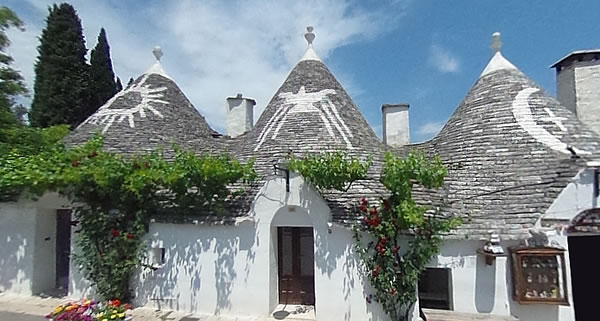
Trulli
The trulli are cone-roofed houses built directly on top of underlying rock without foundations. The stability of these dry-wall constructions, made without mortar, is guaranteed by the roughness of stones and their chips inserted where necessary.
Despite the simplicity of their structure, its construction requires technical skills of the masonry masters also called trullari that in ancient times were peasants built the trulli during periods of pause from agricultural works.
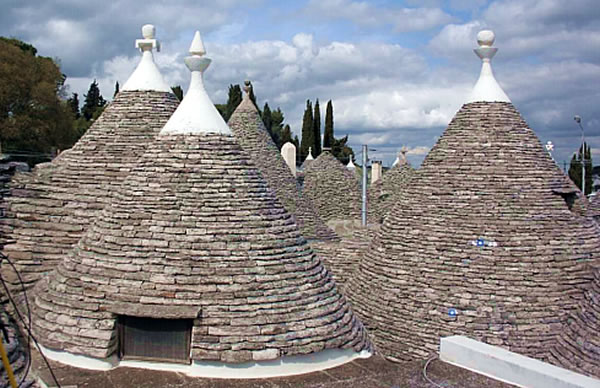
Alberobello - the cone-roofed houses
The trullari built following precise rules imposed by Count Giangirolamo Acquaviva (17th century) because the forest was in a hunting ground possession of Conti Acquaviva d'Aragona.
The Acquavivas needed workers for their lands and so transfered peasants from the near feuds there, in shelters for animals and equipments. Besides, in so doing, the noble family avoided to pay a tax to Viceroy of Naples which the Prammatica de Baronibus
imposed for each new construction.
The constructions with the conical roof were dry and so they could be quickly dismantled in cases of inspection from Naples. For this reason, there are not ancient buildings at Alberobello but only a hunting lodge (Palazzo di Caccia) that Giangirolamo Acquaviva built in 1635.
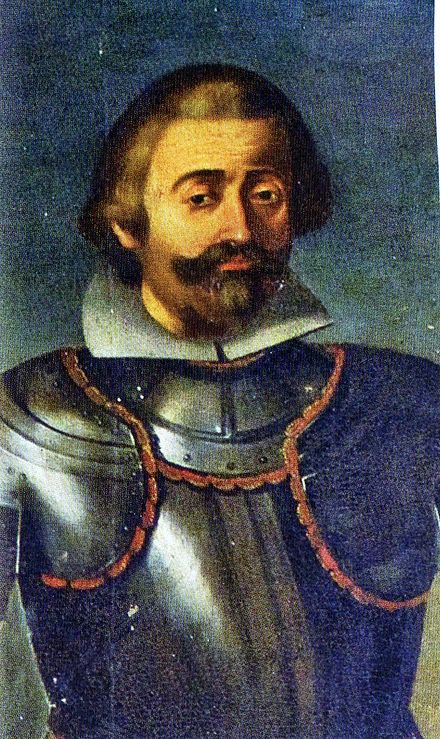
Count Giangirolamo Acquaviva
The situation changed in 1797 when a group of elders denounced the clandestine existence of the feud to King Ferdinando IV di Borbone of Naples to got rid themselves of the Acquaviva domination. The king recognized the village as a royal city and set free it from the despotism of the Counts.
Alberobello could then become a community with a Parliament composed of the heads of families, who could elect a mayor, two councilors and one chancellor for the city government.
In 1843 the laws reversed the tradition: the urban police regulation forbade the dry constructions at all Alberobello except in Monti quarter because was the area where the poor lived. Before this new law there were more than 2000 trulli in the Rione Monti, today there are 1300.
In 1910 the quarter was declared a National Monument, it was forbidden the construction of modern buildings and was placed under protection so its cultural and artistic importance was recognized. Since 1996 UNESCO has included the Apulian trulli in the World Heritage List.
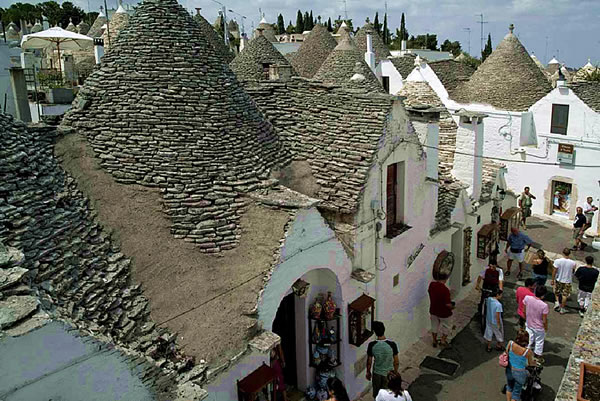
Alberobello - shopping street
The trulli are all equal apparently but different; the element that distinguishes them can be their shape, the symbol painted on the dome or the chimney pot.
The symbols drawn on the roofs are magic or propitiatory or protective signs and are the result of a recent tradition, in spite of the mysterious and ancient appearance. In fact they appeared on the roofs of Alberobello as copies of those of Ceglie Messapica, Martina Franca and Locorotondo only since 1934.
The oldest and most special trulli are in the Monti quarter such as the Trullo Siamese (1400). It Is particular with its elliptical plan, two domes and two entrances placed in two different streets.
Its particularities are the elliptical plan, two domes and two entrances placed in two different streets. According to the legend the reason could be traced back to a story of two brothers, the major of them had promised a bride who loved the younger brother instead. The two lovers got married and went to live in the house that the parents had left to the brothers and where the other brother lived. He did not tolerate the cohabitation and therefore, claiming the right of first birth, demanded that the newly married couple leave it, then the minor brother recognized his right to inherit. The dispute was resolved by dividing the house into two parts and each one with a door that opens onto a different street, one on Via Monte Nero and the other on Via Pasubio.
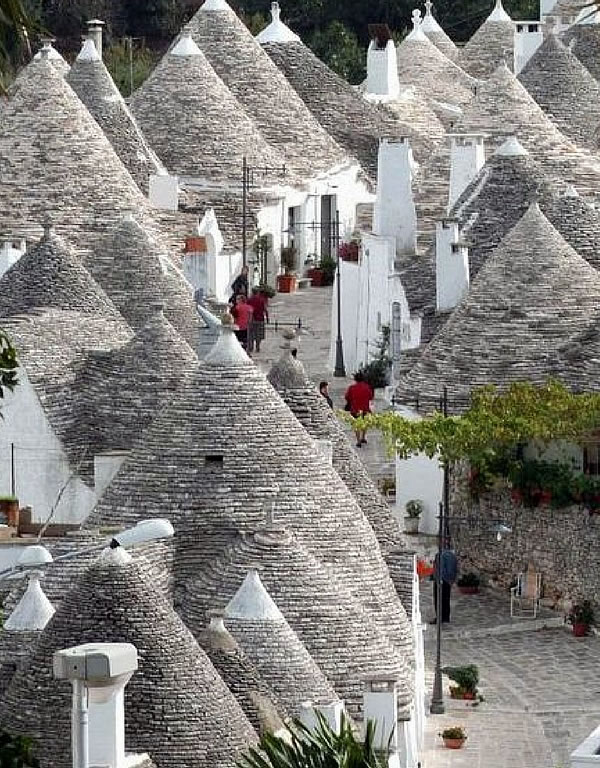
Alberobello – Panorama
Behind the Church of Cosma and Damiano Saints (or Santi Medici), there is the Trullo Sovrano. It was built by a priest of the church (1700) for his family and himself; it is particular because it has two floors and is a part of a group of eleven trulli that are all connected to each other.
It was built dry the Church of Saints Medici too . It was commissioned by Giangirolamo II and his wife Isabella Filomarino like ex-voto to had children after the pilgrimage to the Hermitage of Cosma and Damiano at Isernia. So Isabella gave birth to a son who called Cosimo probably for to honor the Medici saints.
Giangirolamo not only built the church dedicated to them but, every September 27th from 1636, imposed a procession with an image of the Madonna of Loreto and the two Medici Saints that has to go throughout the district and all inhabitants were obliged to participate.
After the death of the Count the procession continued but only for devotion of the saints, who became the patrons of Alberobello. Today only the statues of Medici are brought in procession. In 1938 the church became a Sanctuary and in 2000 it was recognized as the Minor Basilica.
The Count built the church on another ancient; it has been repeatedly renovated and enlarged; the current architecture dates back to the last enlargement occurred in 1885. To realize it was necessary to eliminate some trulli but the population was happy to have such a large church.
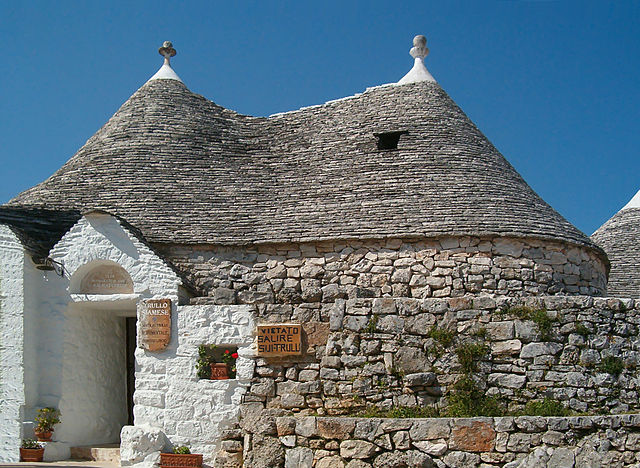
Alberobello – Trullo Siamese
You can admire the panorama of Alberobello at Belvedere terrace. Today the lands around Alberobello are all a succession of vineyards where grapes are produced for the production of the "Martina Franca bianco" DOC wine.
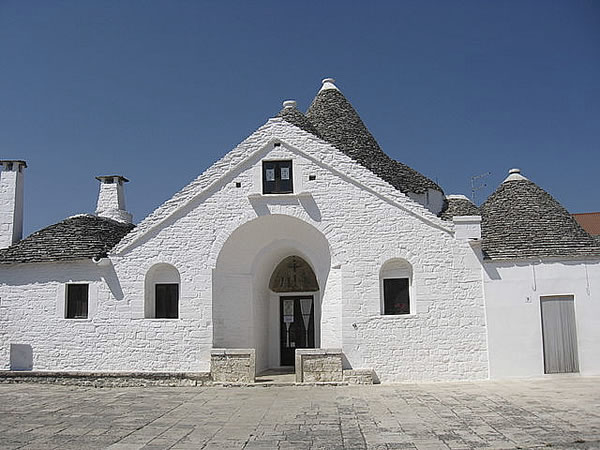
Alberobello - Trullo Sovrano
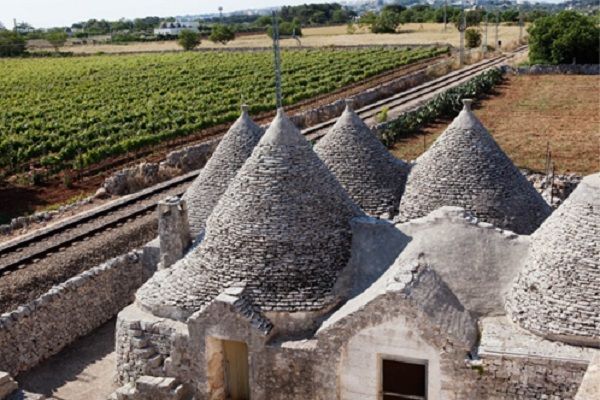
Alberobello, Bari – vineyards
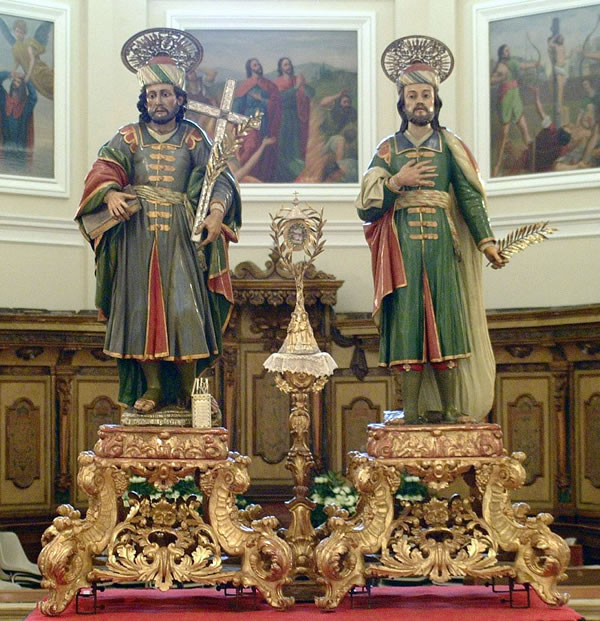
Alberobello, Bari – statues of Medici
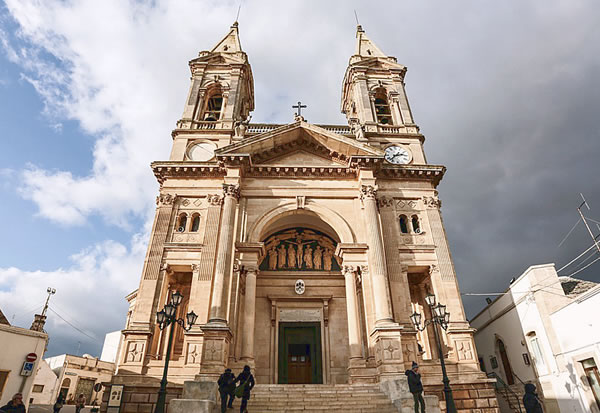
Alberobello, Bari – Church of Cosma and Damiano Saints
by M.L. ©ALL RIGHTS RESERVED (Ed 1.0 - 16/12/2017)



